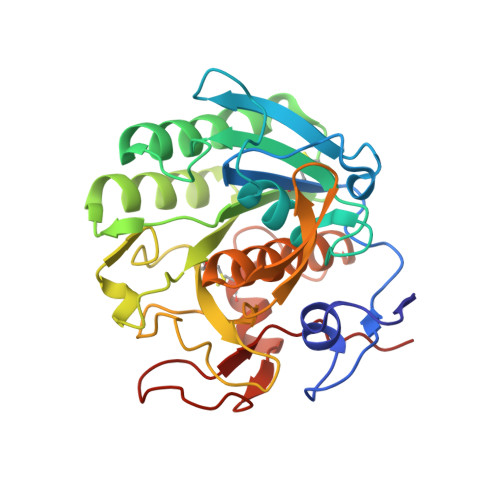Ab initio phasing macromolecular structures using electron-counted MicroED data.
Martynowycz, M.W., Clabbers, M.T.B., Hattne, J., Gonen, T.(2022) Nat Methods 19: 724-729
- PubMed: 35637302
- DOI: https://doi.org/10.1038/s41592-022-01485-4
- Primary Citation of Related Structures:
7SKW, 7SKX - PubMed Abstract:
Structures of two globular proteins were determined ab initio using microcrystal electron diffraction (MicroED) data that were collected on a direct electron detector in counting mode. Microcrystals were identified using a scanning electron microscope (SEM) and thinned with a focused ion beam (FIB) to produce crystalline lamellae of ideal thickness. Continuous-rotation data were collected using an ultra-low exposure rate to enable electron counting in diffraction. For the first sample, triclinic lysozyme extending to a resolution of 0.87 Å, an ideal helical fragment of only three alanine residues provided initial phases. These phases were improved using density modification, allowing the entire atomic structure to be built automatically. A similar approach was successful on a second macromolecular sample, proteinase K, which is much larger and diffracted to a resolution of 1.5 Å. These results demonstrate that macromolecules can be determined to sub-ångström resolution by MicroED and that ab initio phasing can be successfully applied to counting data.
Organizational Affiliation:
Howard Hughes Medical Institute, University of California, Los Angeles, CA, USA.
















